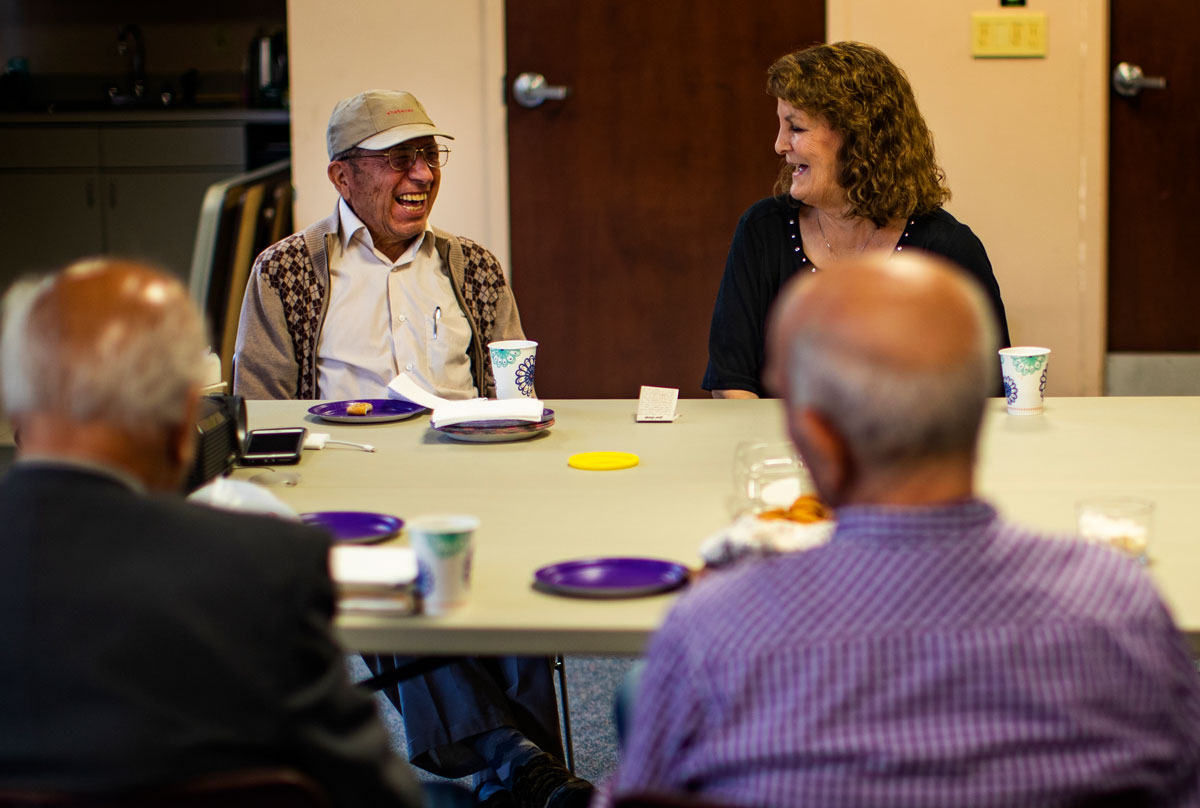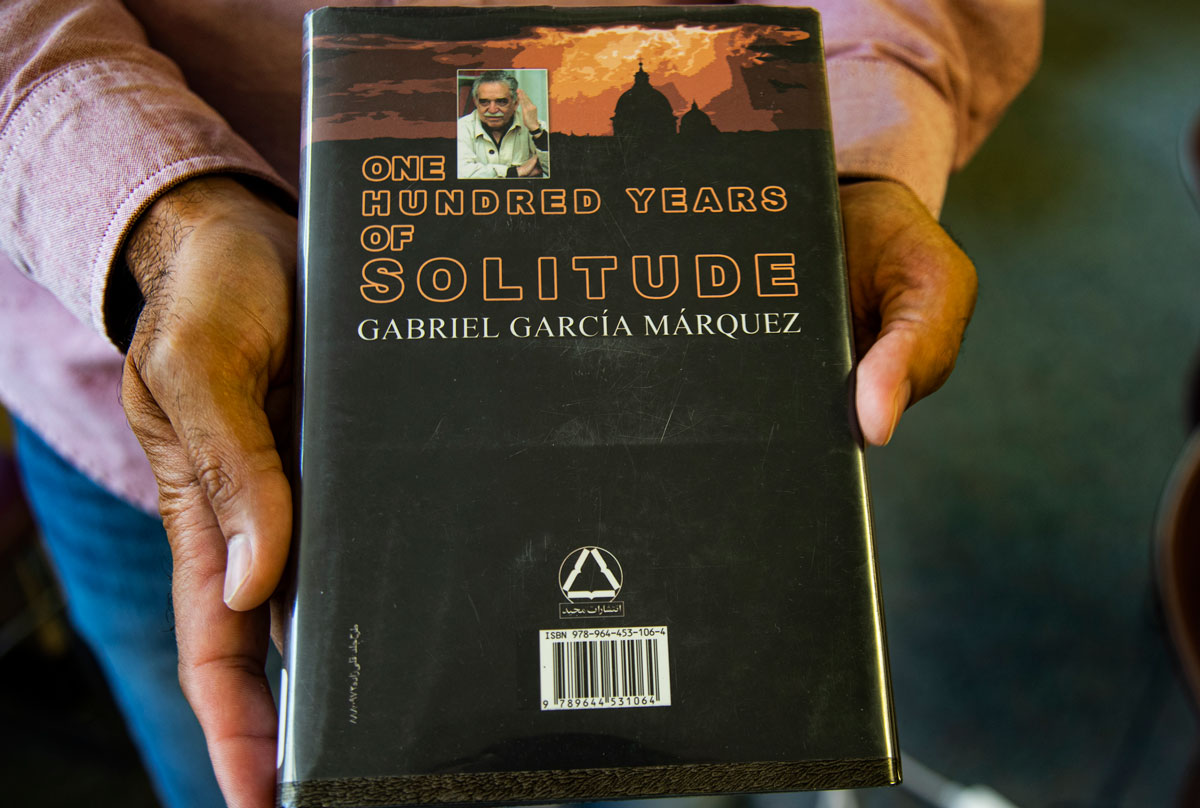Do you know what Los Angeles County is reading? The answers might surprise you.
Every Wednesday, a small group of dedicated book lovers huddles in a library conference room not far from Sawtelle Japantown. On this afternoon, the group is reading the Latin American classic “One Hundred Years of Solitude” by Gabriel García Márquez.
In Farsi.
But first there is tea, a nod to Iranian culture and the homeland left behind by these patrons of the West Los Angeles Regional Library. The tea is hot and dark and strong, sipped with a sugar cube held between the teeth.
This is Los Angeles County, as seen through the books we read. It encompasses Monrovia, where the most-circulated works include “Becoming,” Michelle Obama’s wildly popular memoir, and “The Library Book.” Susan Orlean’s love letter to literacy is also the first selection of the Los Angeles Times Book Club.
And it includes Glendale, whose readers checked out Kazu Kibuishi’s manga blockbuster “Amulet” more than any other volume in the first three months of 2019.
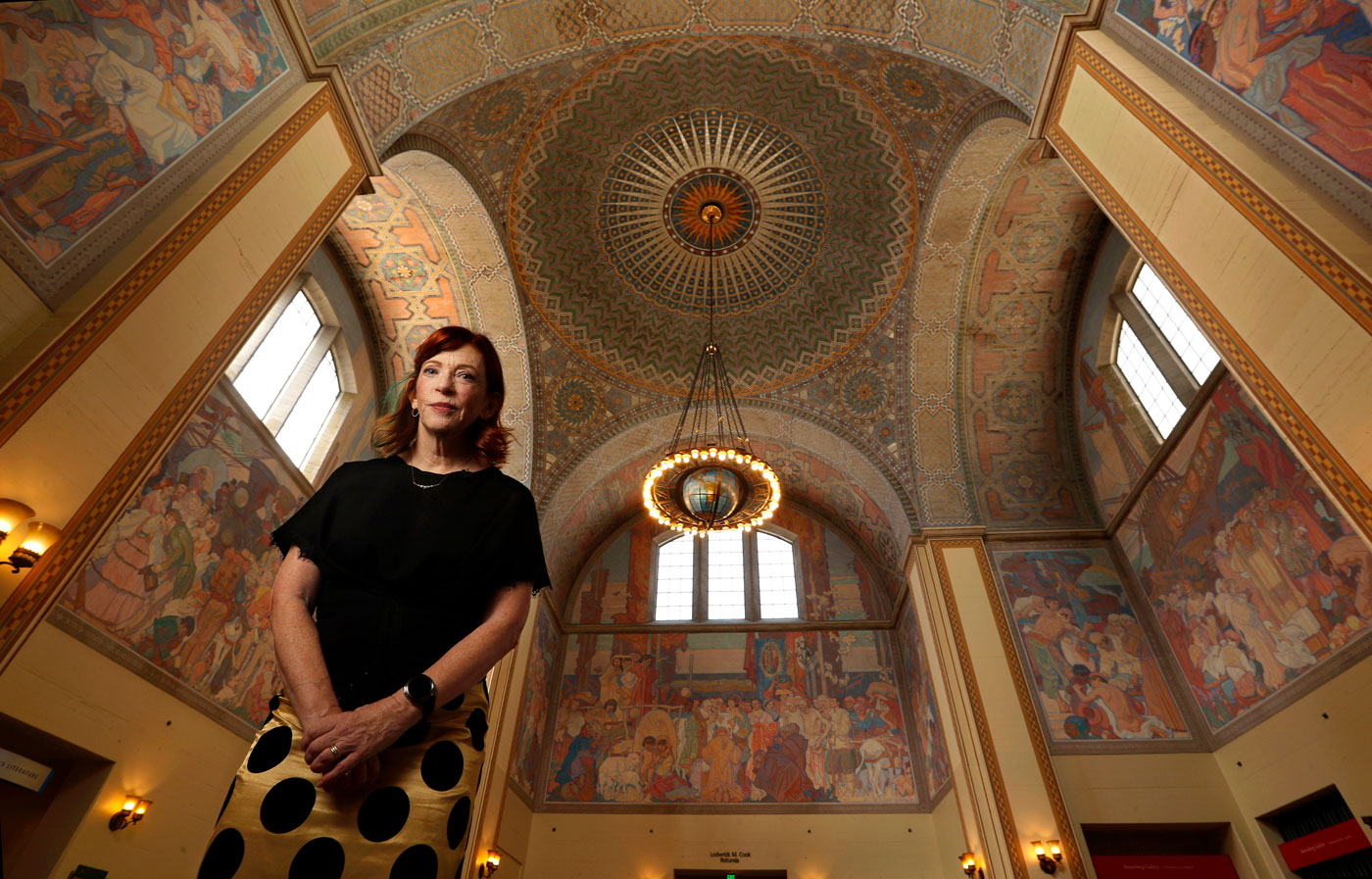
As the Times launches its new community book group, we decided to find out what the county is reading — and, therefore, thinking about. We surveyed 35 library systems, asking which books were most circulated in the first quarter of 2019 and which ones have the longest waiting lists. Twenty-eight responded, representing more than 200 branches.
The lists of most-popular titles were collected from systems as small as Signal Hill’s, which has one branch and 11,000 patrons, and as massive as the County of Los Angeles network, which has 85 public branches and serves more than 3.4 million people. They paint a detailed, multicultural portrait of the region.
What’s your neighborhood library reading?
Enter your address to see the libraries closest to you:
Search by neighborhood branch or library system:
Most popular library books
We analyzed the top three books in more than 200 library branches throughout Los Angeles County in the first quarter of 2019. These, in descending order, appeared most often.
- “Becoming”
- “Dark Sacred Night”
- “The Reckoning”
- “Crazy Rich Asians”
- “Educated”
- “Long Road to Mercy”
- “Past Tense”
- “The Alchemist”
- “Where the Crawdads Sing”
The blockbusters are all there; as the most populous county in the United States, Los Angeles is a big part of what made them bestsellers in the first place. Think “Becoming” and Michael Connelly’s “Dark Sacred Night,” John Grisham’s “The Reckoning” and Kevin Kwan’s “Crazy Rich Asians.”
But the data also highlight the region’s unique neighborhoods, places whose singularity is written in the books residents hold dear. At the Mark Twain Branch Library, in the Westmont neighborhood of South Los Angeles, the three most circulated books are two anthologies of horror stories and the MacArthur Study Bible.
Patrons of Santa Monica’s Main Library routinely fly a liberal flag; their top choice is “Fear: Trump in the White House,” by Bob Woodward. Glendora’s most-read book was Dr. Seuss’ “Green Eggs and Ham.” Among the favorites countywide were volumes in Spanish, Chinese, Japanese, Korean, Vietnamese, Russian, French, Portuguese and Farsi.
So, why use libraries to investigate the books readers here love most?
Because, as Los Angeles city librarian John Szabo explains, “rich folks use our libraries. Folks without homes, who are homeless, aren’t just coming here for air conditioning. They’re reading and they’re using our services, and that’s important to remember.
“Undocumented residents of L.A. are making use of our libraries and have the same rights and privileges in our library that anybody else has,” he said. “Folks in rural Sunland-Tujunga, who have horses, make use of our libraries. We serve everybody.”

A Persian epic and Iranian tea
The West L.A. Library Farsi Reading Club meets in a second-floor conference room with scraped up, Band-Aid-colored walls. Every session starts with sweets, a poetry reading and tea.
The gathering, said librarian Ramin Naderi, is a Southern California reflection of life in Iran’s neighborhood teahouses, where performers called naghāls recite sections of the “Shahnameh,” an epic poem of pre-Islamic Persia that first appeared in the year 1010.
On this rainy Wednesday afternoon, Naderi reads the wistful “Recalling Youth Days” by contemporary poet Rahi Moayeri, which is projected on the wall in sinuous Arabic script: … My fate didn’t grant me grey-headedness for anything/For these white strands, my youth was paying. …
Because there are never enough copies of Farsi books to go around, members also read aloud from the book of the moment. This week is Chapter 10 of “One Hundred Years of Solitude,” which related in part the story of Remedios the Beauty and her great-grandmother, Úrsula Iguarán. Úrsula is the wise Buendía family matriarch, Remedios an innocent who wanders around naked.
Which sparks a debate between Max Rahani, 73, and Raheleh Olomy, a decade his junior, about politics and the role of women. In Farsi, of course.
This is Rahani’s post-meeting English-language recap:
Olomy: “Why blame Remedios? Without clothes, she has freedom.”
Rahani: “If a woman has ideas and is nude, it’s OK. Maybe they are protesting.… If [they] are nude without any idea behind that, it’s not OK.”
The West Los Angeles library’s 10 most-read books start with Obama’s “Becoming” and end with “Ābī ārām,” by Iranian author, Bahārah Bāqirī, known for her romance novels. That “Becoming” would make the area’s list of the most-circulated is a no-brainer. But the popularity of “Ābī ārām” tells us more about the neighborhood, about who lives and reads there.
The West Los Angeles Regional Library is one of five in the Los Angeles Public Library system that had Farsi books on its most-read list. Five of the top 10 books at the the West Valley branch were in Farsi, as were three of the top 10 at the Encino-Tarzana branch and the branch in Westwood, a.k.a. “Tehrangeles.” Sylmar’s best-read list included two.


Where Chinese lit and ‘Wimpy Kid’ top the list
There are so many superlatives when it comes to the population of Los Angeles County, and they all play out in the region’s libraries. It has more Iranians than any other county in the United States. Nearly 50% of the population is of Hispanic origin. The largest Chinese population of any county in the nation is here too.
At the Chinatown Branch Library, for example, the 10 most-requested books are all Chinese-language volumes. No surprise there. But the sole branch in pricey San Marino’s one-library system also lists Chinese-language books among its most circulated.
City Librarian Irene McDermott notes that the 2010 census showed 53% of residents identify as Asian in San Marino. That helps explain why three of the most-circulated adult books at the Crowell Public Library are in Chinese: “Stories of Lian Jiang,” “Love in Cold Palace” and “Struggles in the Palace.”
But if you look at all books, not just adult reading, the San Marino top 10 takes a dramatic shift. Yes, “Stories of Lian Jiang” and “Love in Cold Palace” still make the grade, at No. 3 and 4 most-circulated respectively. But all the rest of the books are for children, with “Diary of a Wimpy Kid” titles at spots No. 1, 2, 8, 9 and 10.
“Oh, to be Jeff Kinney!” McDermott said, referring to the author who created beleaguered seventh-grader Greg Heffley, star of 13 Wimpy Kid books, with a 14th due in November, and four movies. When Greg’s first miserable week in middle school ended, he wrote in his journal (Do NOT call it a diary!) that “the only reason I get out of bed on weekends is because, eventually I can’t stand the taste of my breath anymore.”
At the Santa Monica Public Library’s Pico Branch, the second and third most checked-out books are aimed at the short set. There’s “Geronimo Stilton,” an Italian series detailing the exploits of an adventurous mouse of the same name. And “Disney Fairies” — need we say more?
Patty Wong, Santa Monica director of library services, lauds the quality of children’s books, one reason she says they’re so popular. Not only do most have top-notch illustrations, but they’re “probably the strongest-edited of the materials out there.” They also have big crossover audiences.
“Our children’s materials don’t only speak well to the children for whom they’re intended,” she said. They also resonate with “early learners and English-language learners. When I was in Berkeley and doing a lot of work with non-English speakers, specifically Japanese … a lot of older Japanese speakers wanted to learn more about American culture through our children’s books.”

All about Michelle Obama’s journey — or your own
Self-help books make a big splash, in keeping with Szabo’s tenet that “libraries are the people’s university.” At the Cypress Park Branch Library not far from Dodger Stadium, the two most-circulated books are test preparation study guides for becoming a custodian. Many branches include “Unfu*k Yourself: Get Out of Your Head and Into Your Life.”
And at the Azusa Public Library, “Girl, Wash Your Face,” by Rachel Hollis, is beaten out only by the blockbuster memoirs “Educated,” by Tara Westover, and “Becoming.” Leila Hassen, the library services manager, said “Girl” is particularly popular with female patrons in their 20s and 30s.
“It’s definitely an empowering book, being kind to yourself and forgiving toward yourself,” Hassen said. “It’s a huge trend for our patrons. There’s a huge focus on wellness.”
And then there’s politics. In these polarizing times, when social media is filled with angry ranting about all things electoral, political books of all stripes are liberally sprinkled among library branches’ most-circulated books and those with the longest wait lists.
Want to read it? Get in line.
Throughout the LA County Library system’s 85 public branches, more people have reserved these books during the first quarter of 2019 than any others. They appear in descending order.
- “Becoming”
- “Where the Crawdads Sing”
- “Educated: a Memoir”
- “The Library Book”
- “Run Away”
- “Dog Man: Brawl of the Wild”
- “Bad Blood: Secrets and Lies in a Silicon Valley Startup”
- “Becoming” [large print]
- “Medical Medium Liver Rescue”
Race and gender, left and right, factual and conspiracy theorist, they’re all there. Beyond Woodward’s “Fear,” which is a hit at various branches, “Unhinged: An Insider’s Account of the Trump White House” by onetime Trump political aide Omarosa Manigault Newman came in at No. 4 at the Ascot Branch Library in South Los Angeles.
“Everything Trump Touches Dies,” by Republican strategist Rick Wilson is No. 10 at the Chatsworth Branch Library. Readers at the Junipero Serra Branch Library near USC were fond of “Ship of Fools: How a Selfish Ruling Class is Bringing America to the Brink of Revolution,” in which Fox News star Tucker Carlson skewers politicians both red and blue.
Politically tinged fiction was also popular, including George Orwell’s “1984” and “Animal Farm,” Ray Bradbury’s “Fahrenheit 451” and “The Handmaid’s Tale” by Margaret Atwood, which envisions a dystopian world in which fertile women (a rarity) are forced to produce children for the male ruling class. (“Handmaids” dressed in red show up regularly at political protests these days.)
Members of Get Lit — A Los Angeles Book Club Meetup found serious political overtones in “Asymmetry,” a recent novel in three movements, by Lisa Halliday. The first section considers the relationship between Alice, a books editor in her mid-20s, and Ezra Blazer, a famous, aging novelist based on Philip Roth, whom Halliday dated back in the day.
Get Lit meets monthly on the second floor of the Original Farmers Market at Fairfax Avenue and 3rd Street in Los Angeles. Members range from their 20s on up, and their conversation floats above clinking plates, barking dogs, and other people’s chatter.
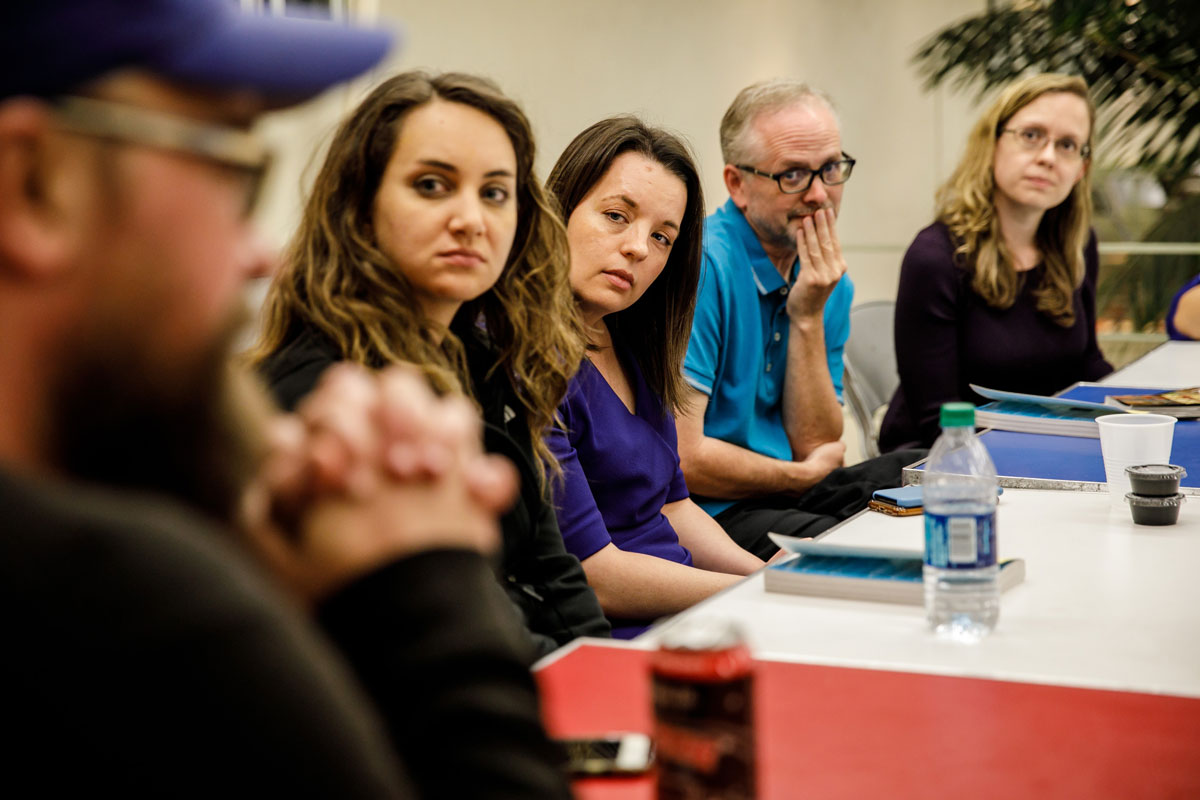
The politics that snagged these readers’ interest — and, often, annoyance — was gender-based through and through, a general acknowledgement of Blazer’s power and Alice’s subservience. Just listen:
Kristen Knox, a member for three years: “I kept praying for the guy to die so something would happen. She’s at his beck and call. If it were my friend, I’d slap her. ‘Oh, honey!’ ”
Alex Newman, “Asymmetry’s” rare defender: “To me, it never read as predatory. To me, he never did anything but give her money.”
Perhaps the most popular book across Los Angeles County was also political. And personal. And inspirational. And a little confessional. And political.
“Becoming,” which debuted in November, sold nearly 10 million copies in its first three months, according to Bloomberg, prompting Bertelsman Chief Executive Thomas Rabe to declare, “We believe this could become the most successful memoir ever.”
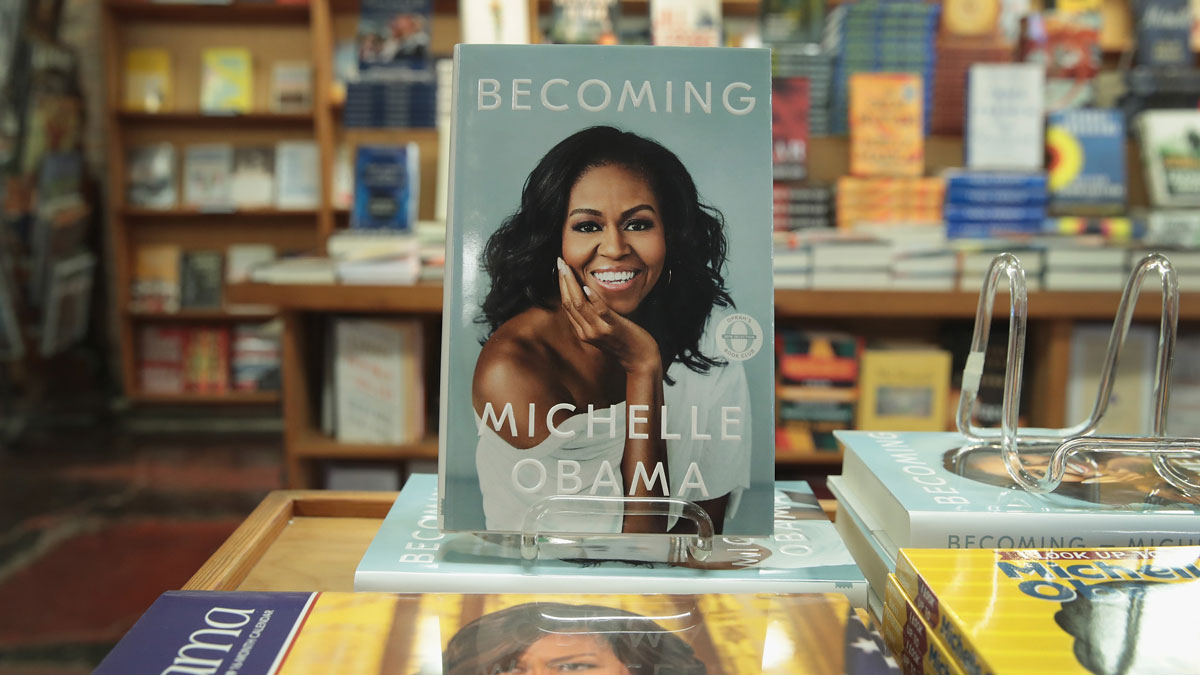
It appeared more times than any other among the three most popular books of all 200-plus branches surveyed.
It was the second-most-read book, systemwide, in the Los Angeles Public Library between January and March, behind Connelly’s “Dark Sacred Night.”
“Becoming” had the longest waiting list of any book in the LA County Library. That system owns 121 copies. In the first quarter, 893 people placed a hold on Obama’s memoir, hoping to read it before the next election comes and goes.
If you want to borrow it, you’ll have to wait. And wait. And wait.
Vera Castaneda contributed to this report.
Credits: Animations by Swetha Kannan. Books icon by Hawraa Alsalman from the Noun Project.
